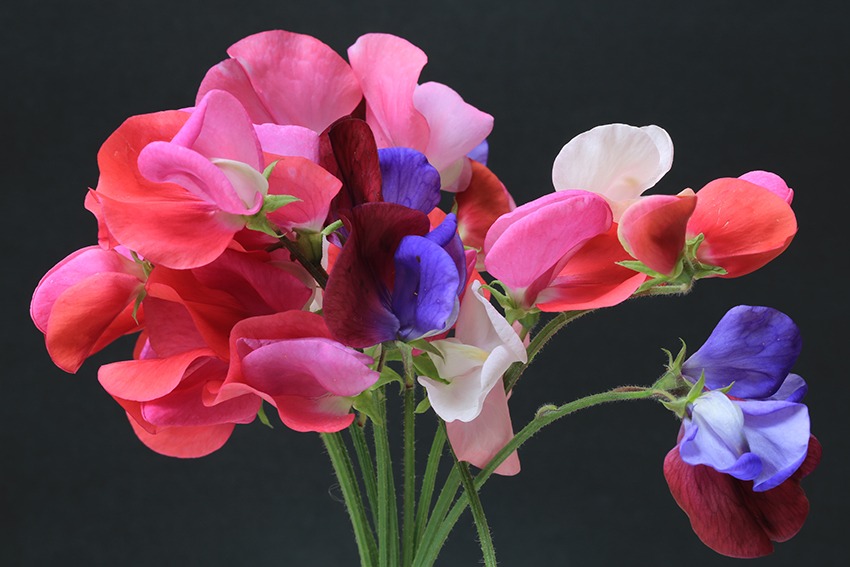by Sharon Asakawa
Sweet peas (Lathyrus odoratus) thrive in cool temperatures, so it's important to get them blooming early, before summer heat knocks them out.

You can plant them outdoors as soon as the soil can be worked in spring, but gardeners in the south can start sweet peas in late fall for bloom in late winter or early spring. October is the perfect month in southern California.
Once planted in late fall, seeds germinate and send most of their energy below ground for root development.
There is little aboveground growth at this point; the seeds will spend the coldest winter months developing and securing the plants to the soil. As the weather starts to warm again in the early spring, rapid growth follows that results in blossoms in the late winter and often into the early summer. Growth diminishes as the weather warms, because sweet peas are not tolerant of temperatures above 80 degrees F unless they are provided with some shade during the hottest part of the day.
Scottish nurseryman Henry Eckford (1823–1905) cross-bred and developed the sweet pea, turning it from a rather insignificant, though sweetly scented flower, into the floral sensation of the late Victorian era.
His initial success in raising new cultivars came while serving as head gardener for the Earl of Radnor. In 1888 he set up a development and trial fields for sweet peas. By 1901, he had introduced a total of 115 of the 264 cultivars grown at the time.
Eckford was presented with the Royal Horticultural Society Victoria Medal of Honor for his work. He died in 1906, but his work was continued for a time by his son John Eckford. The Society of Wem started an annual show. Many of the street signs now carry a sweet-pea motif, and an area of the town is known as Eckford Park. There is also a cultivar ‘Dorothy Eckford’, named after a family member.
